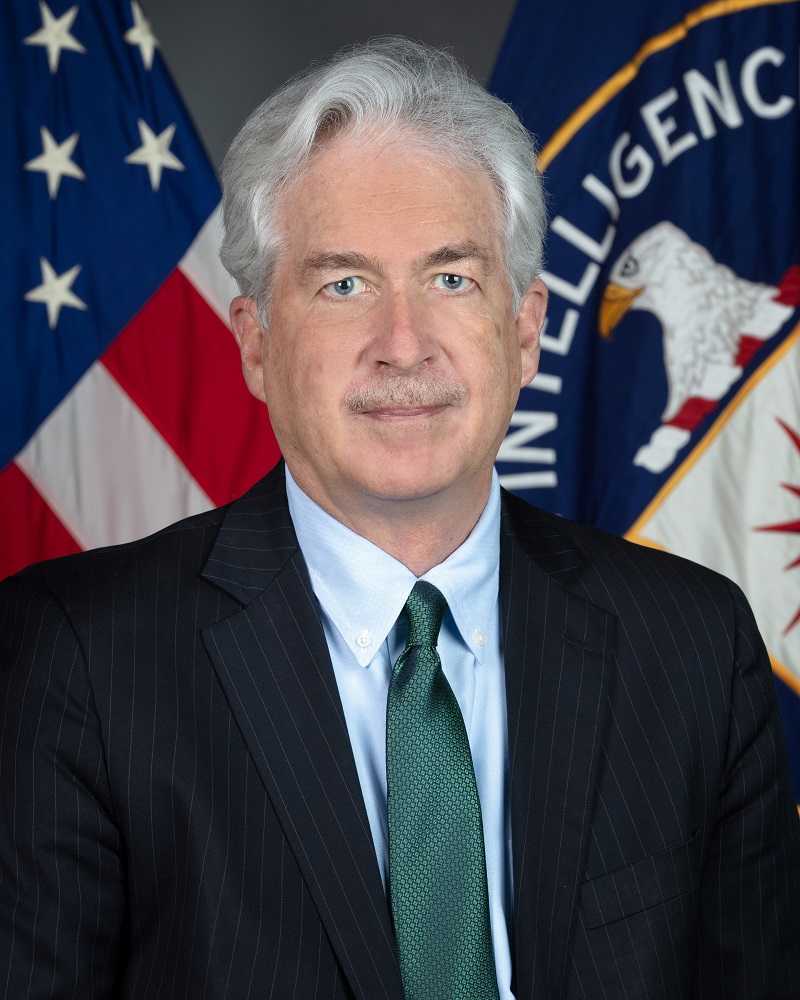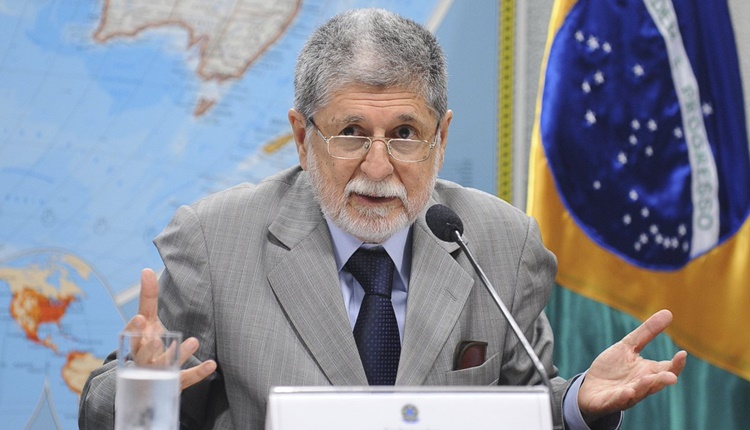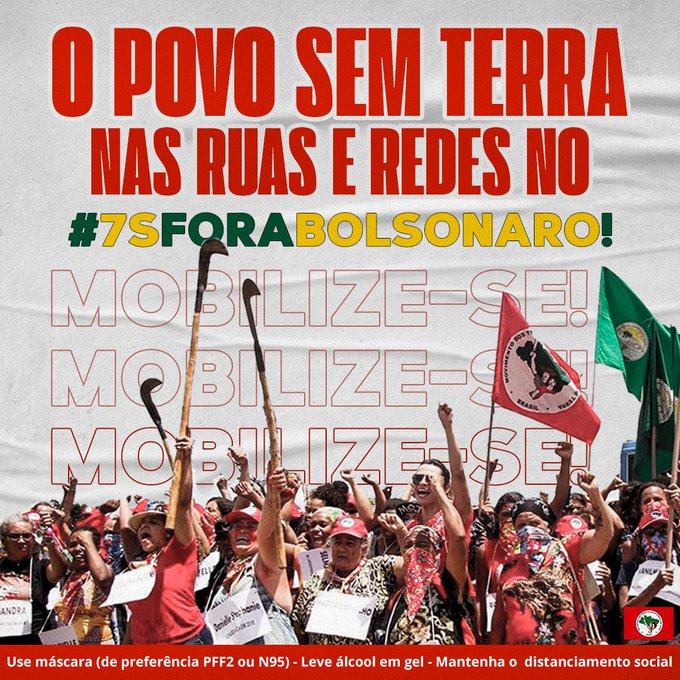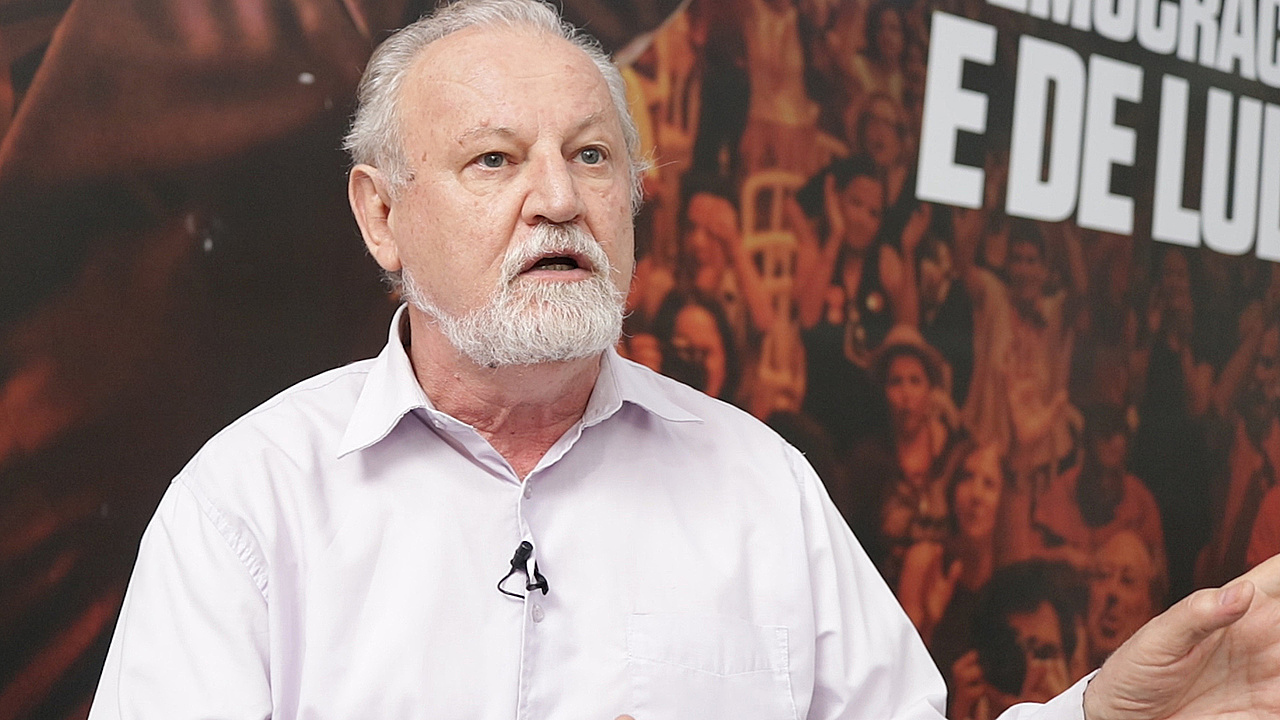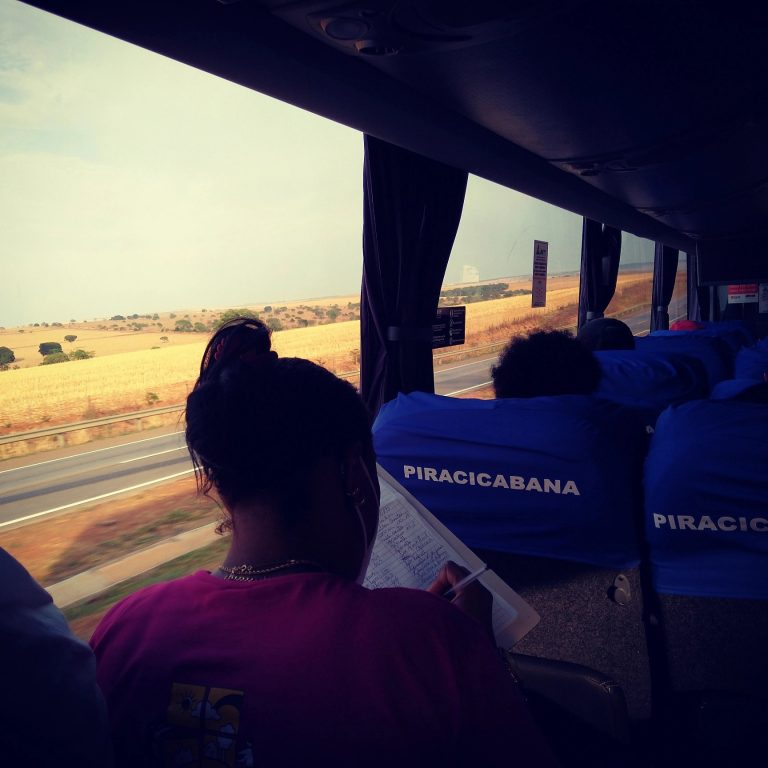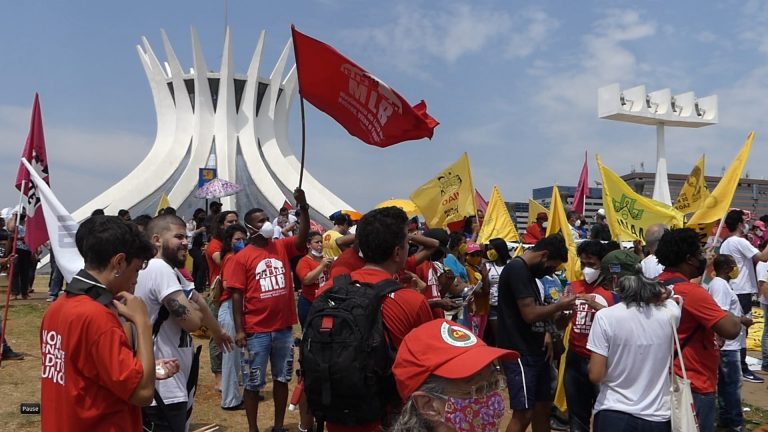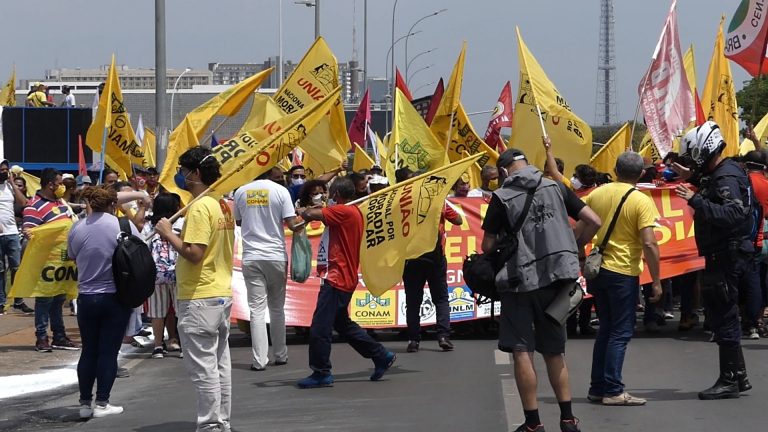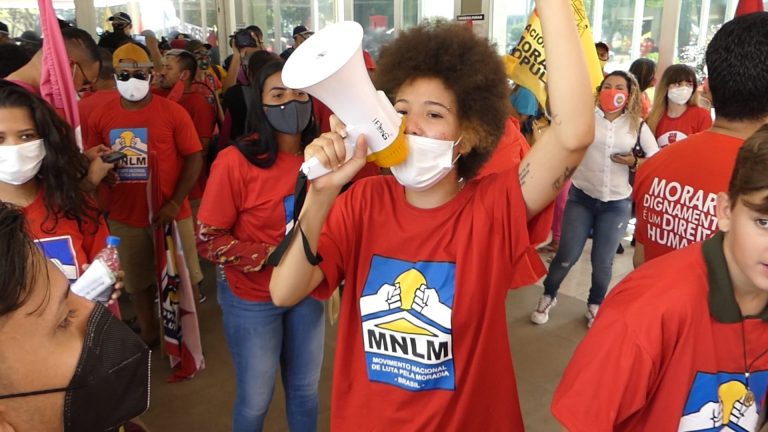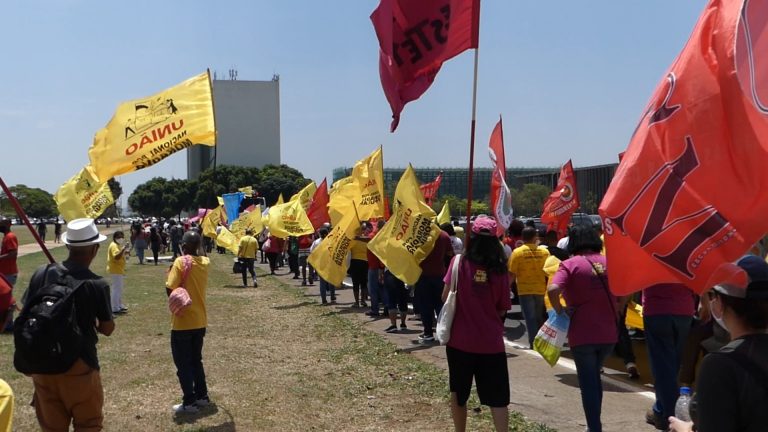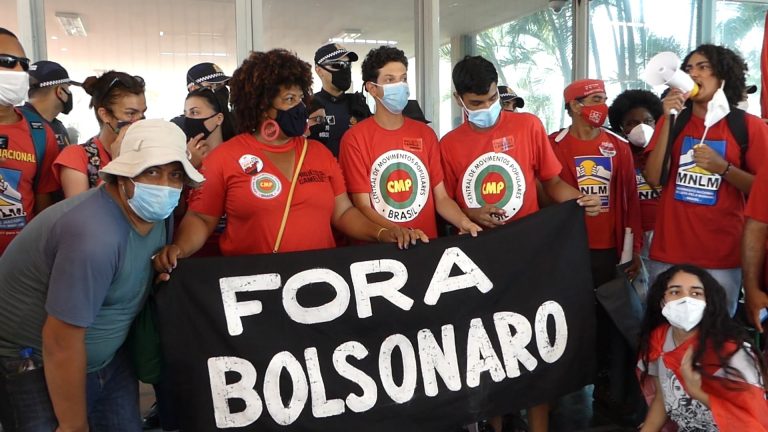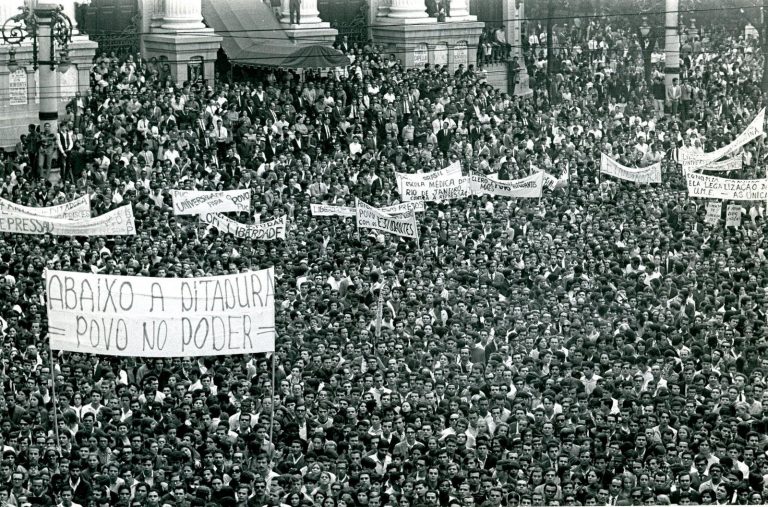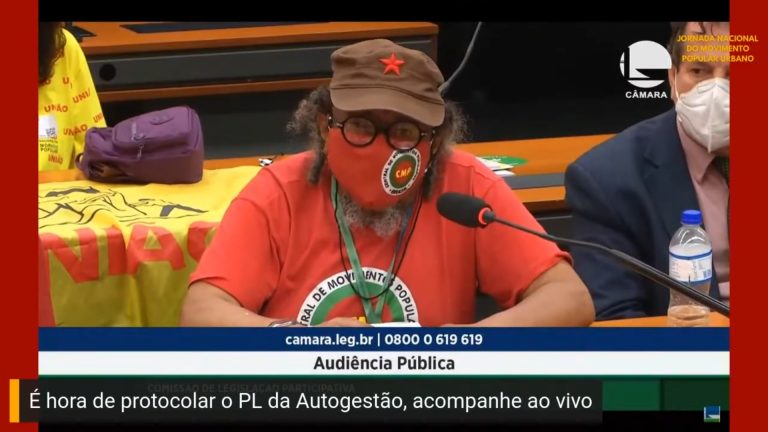September 7th, the View from Brasília
The Supreme Court is still operating as usual. The “coup” was getting everyone to think one was about to happen.
By Brian Mier
On the afternoon of September 6th I headed to Guarulhos airport to catch a flight to Brasilia, where I would cover the planned Independence Day protest, announced by President Bolsonaro and his followers as an event that would have 1 million people in it, that had the primary goal of pressuring the Supreme Court, with some followers even threatening to violently occupy and shut down the court itself. I imagined that the flight would be packed with Bolsonaro supporters and was surprised to look around the waiting area and only identify a few people who looked like they were going to the protest. There were two middle aged women with died blonde hair wearing green and yellow scarves, one guy in a yellow Bolsonaro hat, two men who looked like off duty military special ops and a chubby middle aged guy wearing his mask on his chin in camouflage shorts and a Helloween T-Shirt – I just knew he was going. I boarded the flight and sat next to a middle aged guy with a buzz cut. ‘He must be a bolsominion‘, I thought, until I noticed he was reading a book by Bertolt Brecht. Bolsonarism is an anti-intellectual movement. To many of them, if a book is not about Jesus or free market economics, it should be burnt.
I arrived in Brasilia and, once again, was surprised to see the airport nearly empty with very few people who looked like they were arriving to go to the protest. ‘Is this thing going to be a flop?’ I thought to myself. Then, on the way towards my hotel, we passed a road leading to the Esplanade with dozens of RVs, buses and vans parked on it, with people sitting on the grass barbecuing and drinking beers. I had booked a room in a large hotel on Brasilia’s lakefront that is popular with conventioneers – the last place I could find that still had rooms. It was entirely packed with people in yellow and green Bolsonaro shirts and jerseys. There were groups of 40 or 50 people with identical shirts on, with a dozen buses parked outside the hotel. Hoping no one would recognize me from my popular web TV program Globalistas and regular appearances on TV 247, I pulled my hat down and checked in. I got in the elevator to go up to my room. On the next floor, an elderly couple appeared, looking nervous. “We are from the country” the man said, “could you explain how this thing works? How do we get to the lobby?”. They had never been in an elevator before. Later, I went down to the lobby to buy a soft drink and a man, who appeared to be part of a bus that had arrived from rural Mato Grosso, the soy-producing state of former Amazon rainforest, asked me how a vending machine works. “I am trying to buy a coke,” he said, “could you help me? What do I have to do?” He’d never seen one before.
The next day, Rede Brasil Atual, the media outlet connected to the CUT labor union federation, broke a story about conservative business leaders offering poor people R$100 to travel in buses to the protest. This seemed to be the case with many of the people staying in my hotel. Not that they necessarily were not Bolsonaro supporters, but I got the feeling that a lot of them were in this for the free trip. Interspersed among the group were a few people who definitely looked like Bolsonaro fanatics and there were a dozen big motorcycles parked in the lot out front belonging to some kind of right wing, bourgeois motorcycle gang.
The hotel was a circus of drunks running up and down the hallways. The internet had crashed, my TV was broken and the whole place stunk like stale beer. I decided to put in early so I could get up at dawn and go out to cover the protest. Suddenly the news broke that a group of truckers had broken through the security barrier on the Esplanade and, together with hundreds of jubilant Bolsonaro supporters and allegedly even Eduardo Bolsonaro himself, they were heading toward the Supreme Court Building.
A sinking feeling came over me. What would happen if they overthrew the Supreme Court and started clamping down on leftists – a promise Bolsonaro made on the campaign trail and has reiterated repeatedly since. I started thinking of a possible escape route, then wondered if it was worth risking filming the protest the next day. I got on Twitter to see what the news was and saw a calming message from Workers Party (PT) President Gleisi Hoffmann, the former liberation theology activist and student union leader who is featured in the documentary O Processo about the coup against Dilma Rousseff. “It’s true that tomorrow is September 7th,” she said, “but the next day is September 8th… Look at this video. Congress and the Supreme Court are completely secure. No one is coming anywhere near them. The truckers got onto the Esplanade because the police opened the barricade for them.” Essentially, she said it was a stunt.
What had really happened? As a Military Police Officer who I met at a bag-searching checkpoint in the protest the next day told me (information that was later confirmed in the media), a group of truck driving Bolsonaro supporters had obtained permits to park their trucks on the Esplanade for the protest that came into effect at 12:01 AM, September 7th, but they arrived 2.5 hours beforehand and negotiated with the police to park early. Among their group were several truckers who didn’t have their permits in order. After promising not to get anywhere near the Supreme Court and Congress, the police on the scene opened the barricades for them and a group of apparently drunken Bolsonaro supporters followed them in as if it were a victory parade. As the video posted by Gleisi Hoffman showed, no one came within a hundreds of meters of the Supreme Court.
This did not stop a 10 hour international news cycle from unrolling about chaos in Brasilia. For the next hours, it looked like a there would be a violent occupation of Congress and the Supreme Court, something that had been promised for months by elite supporters of Jair Bolsonaro, several of whom had been jailed for publicly calling for it. ‘When would it happen?’ surpassed, ‘would it happen?’ in the minds of many, including myself.
It is no secret that well known figures from the international far right like Steve Bannon, Beatrix von Storch and Jason Miller had met with the Bolsonaros during the weeks leading up to September 7th to help them develop tactics and strategize. One apparent result of this, which has Bannon’s footprint all over it, is the use of social media bots. A study released on September 5 by ITS (Instituto de Techologia e Sociedade to Rio) identified 2621 Twitter Bots calling people to the Anti-Supreme Court protests/insurrection, in 81,000 tweets the week before the event. An earlier study shows over half of Jair Bolsonaro’s Twitter followers are bots.
That night, my twitter feed suffered its first ever coordinated bot/troll attack. After dozens of users with mysterious handles and under 20 followers, and a handful of right wing social media influencers repeated the same insults over and over again – “fake news!” “Gay communist”, “Liar”, “go back to your country” – I had to temporarily lock my account. Some of the comments hinted at physical violence against me the next day, so I decided to shave my beard, dress like a bolsominion and discretely walk around filming with my smartphone until I assessed the security situation.
Putting on my Kris Bryant Chicago Cubs T-Shirt, with its big number 17 (Bolsonaro’s 2018 ballot number), a black cap and fake ray ban aviator classes, I hoofed my clean shaven self a mile over to the Esplanade. It was big but there were definitely nowhere near a million people there. I had been in the largest protest in Brasilia history in 2017, when union members came in thousands of buses from across Brazil to protest US-backed coup President Michel Temer’s neoliberal labor reforms. That day, there were 230,000 of us on the Esplanade. By my calculations, this crowd was about half that size. One of the first things I saw arriving on the scene was a huge line stretching up to two airport style metal detectors. Anyone who wanted to come anywhere near the stage had to go through a full security check. There were also checkpoints in various points around the Esplanade where military police officers where stopping people and searching their bags.
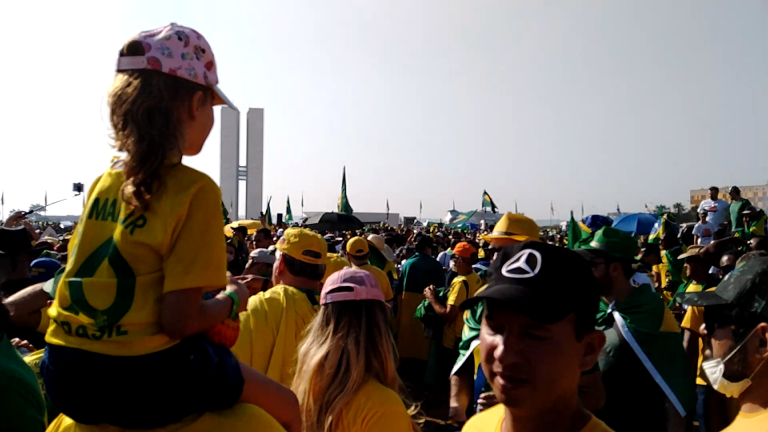
The crowd, almost entirely dressed in green and yellow, with many people draped in Brazilian and occasionally Israeli flags, was well behaved. Speakers led chants about things like Jesus praying for Bolsonaro and throwing Lula in jail. Anti-Communist banners and signs were everywhere. Military jets flew in formation over the crowd and every time a military helicopter flew over exuberant Bolsonaro supporters waved their arms to the heavens in joy. There were giant, green images of Brazilian founding fathers with conservative sounding quotes suspended from the roofs of every Ministry building. I started filming and noticed that I was using Leni Reifenstal style, majestic camera angles. ‘This is what it must have been like in the 30s,” I thought. Nearly everyone was acting friendly, but most didn’t seem especially bright or coherent. Telling people I was working for a German news agency’s Instagram page broke the ice. Bolsominions love anything white.
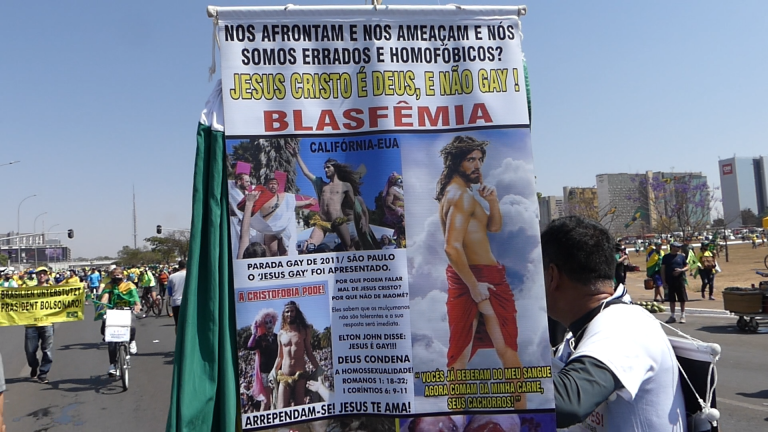
“People are trying to make Jesus seem gay,” this bolsominion angrily warned passers by.
“My ancestors are from Germany,” a middle aged woman told me. “and we are here for freedom.” I asked another woman about her sign which read, in English, “Criminalization of Communism”.
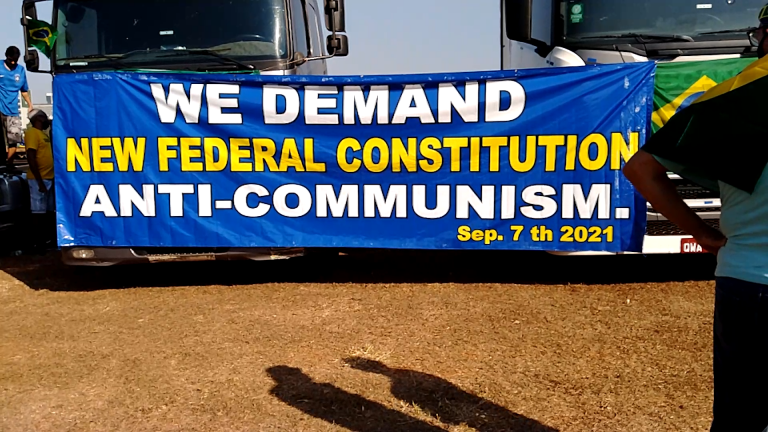
“We are criminalizing communism – the Toga Communism of the Federal Supreme Court – which is implanting communism in our country and censuring our freedom,” she said, “and this is why we support Bolsonaro – we are against the criminalization of the Toga.”
It’s important to note that this is the same Supreme Court which, in 2018, opened an exception to the Constitution under pressure from the military to jail ex-President Lula during election season in order to remove him from the race and open the door for Jair Bolsonaro. The main target of the protesters ire, Alexandre de Moraes, is a Michel Temer appointee who, as conservative governor Geraldo Alckmin’s State Security Chief in São Paulo, legalized the use of rubber bullets against teenage protesters during the public school occupations. I shouldn’t even have to say this, but he is clearly not a communist.
After an hour working my way through the crowd. It began to look like there wasn’t going to be any storming of the Supreme Court. I asked a police officer what he thought and he said that it was definitely not going to happen, so I worked my way through the crowd to Oscar Niemeyer’s National Mall for a coffee and some air conditioning.
Later that day, it came out that operatives connected to the Trump administration including Jason Miller had been held for questioning by the Federal Police as they tried to leave the country. Brazil doesn’t have the same free speech laws that the US does – it’s closer to the German model – and, perhaps surprisingly for Steve Bannon, he and some of his henchmen are now under investigation for breaking the law by spreading fake news on social media and supporting calls for violence against government institutions as part of an organization that is being called “Carlos Bolsonaro’s Electronic Militia”.
As reports came in about lower than expected turnouts in other cities across the country, it dawned on me. We’d been sucker punched by Bannon and his crew yet again. The “chaos” wasn’t the pre-ordained storming of the Supreme Court Building. It was scaring the media and the public into thinking it was going to happen. The early arrival of trucks on the Esplanade was spun by thousands of bots and paid social media influencers into a media event that was used to generate expectation of something which was never going to happen. The chaos in Brazil was the 10 hours between the truckers arrival on the esplanade and the start of the peaceful protest. As the Bolsonaro’s “Electronic Militia” now works overtime on the social media to artificially blow up the protests into a massive success story and shout down or insult any journalist who tries to accurately depict the crowd size, even using the Military Police’s own estimates, it’s time to regroup and ask ourselves the following questions: How did we fall for this again and what can we do to fight back so these tactics stop working?
https://www.brasilwire.com/september-7t ... -brasilia/
******************************************
Endless lands
SEPTEMBER 8, 2021
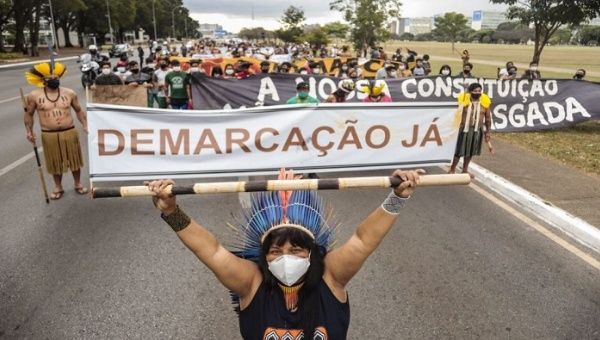
Some 13 percent of Brazil is demarcated as indigenous lands. Some 800 lots are pending pending the completion of the demarcation process, and in many indigenous communities, the process did not even begin.
The recovery demand was established by the Government of the southern state of Santa Catarina against the Xokleng people. It is about the Ibirama-Laklãno aboriginal lands.
A historic judgment will define the fate of ancestral lands in Brazil. The Supreme Federal Court (STF) debates the validity of the “temporary framework”, which would only recognize as native territories those occupied by native peoples when the federal Constitution of October 5, 1988 was promulgated.
The recovery demand was established by the Government of the southern state of Santa Catarina against the Xokleng people. In other words, it is about the Ibirama-Laklãno aboriginal lands, the Guarani and Kaingang peoples.
For the natives it is clear that their lives are going to be lost on this, their land claims are necessary for indigenous survival. While the Government of Jair Bolsonaro defends at all costs the legal security of the farmers and owners in these areas, on a framework imposed, clearly unconstitutional from the point of view of the native peoples.
The Time Frame
"There is a scenario of legal insecurity and violence against indigenous people" and the time frame "would legalize illegal acts committed before 1988", denounces the representative of the Xokleng ethnic group, Rafael Modesto dos Santos.
There is no time in the Constitution, there is no time of possession and occupation, it also specifies on behalf of the ethnic group in dispute -the Xokleng- Carlos Frederico Marés de Souza Filho.
"The time frame is detrimental because it erodes, contaminates the concept that the Constitution establishes." In this, the "Constitution is categorical, recognizing the original right of indigenous peoples to the land," says the member of the Articulation of Indigenous Peoples of Brazil, Luiz Eloy Amado.

Photo: Karla Mendez
"To adopt the temporary milestone is to ignore all the violations to which the native communities are subjected," he says.
The Xokleng community that lives in the state of Santa Catarina, in southern Brazil, claims the hectares of land that belonged to them until the arrival of European settlers who settled in their ancestral territories.
Now, the Court is analyzing whether the state government applied too narrow an interpretation of indigenous rights by recognizing only the lands occupied by native communities at the time the Brazilian Constitution was ratified in 1988.
The right to ancestral lands is determined in the Constitution and denying it would create a dire precedent.
Demarcation
Some 900,000 indigenous speakers of almost 300 languages inhabit Brazil in 305 tribes. Being indigenous in Brazil means living on alert against the violence of the invaders, racial discrimination, food insecurity and unhealthy conditions.
A childhood burdened by chronic malnutrition, parasitic and infectious diseases of 25 percent of indigenous children under 5 years of age, plus Covid-19.
Native natives occupy around 13 percent of the country's surface, of the 690 territories with indigenous inhabitants recognized, until now, by the Government.
The demarcation of an Indigenous land aims to guarantee the indigenous right to the land. It must establish the real extent of indigenous possession, ensure the protection of the demarcated limits and prevent its occupation by third parties.
Since the approval of the Indian Statute, in 1973, this formal recognition obeys an administrative procedure, provided for in article 19 of that Law.
Such procedure stipulates the stages of a long demarcation process, regulated by Executive Power Decree. Over the years it underwent several modifications. The last and most important took place through Decree 1,775 in January 1996.
For the Articulation of Indigenous Peoples of Brazil (APIB) the so-called "time frame" is "a ruralist thesis that restricts indigenous rights."
The indigenous interpretation considers the time frame unconstitutional. Instead, this thesis is defended by companies and economic sectors interested in exploring and appropriating indigenous lands. This is opposed by the so-called “indigenous theory”, enshrined in the 1988 Constitution.
APIB states that “the indigenous right to land is original, that is, it predates the formation of the Brazilian State itself, regardless of a specific date of possession of the land (“ time frame ”) and even the administrative demarcation procedure. territorial".
Luiz Eloy Amado, APIB lawyer, assured that it is unconstitutional because there was no term in the 1988 Magna Carta that guarantees the right to ancestral lands.
"The land issue," said the lawyer, "is fundamental for the indigenous peoples of Brazil," adding that some 800 claims will be paralyzed if the court does not reject the 1988 deadline.
On behalf of the Government, Attorney General Bruno Bianco argues that the "time frame thesis" provides legal certainty to farmers.
Many ranchers have lived for decades on land that was once inhabited by natives, driven out by the arrival of European settlers.
According to anthropologist Manuela Carneiro da Cunha, indigenous people can only request the areas they occupied on that date. But it turns out, the specialist emphasizes, that the forced expulsions of indigenous people occurred in Mato Grosso do Sul and western Paraná in the 1940s, which does not invalidate their right to land.
The executive coordinator of the Articulation of Indigenous Peoples of Brazil (APIB), Dinamam Tuxá, added that they have not delimited the land for a long time, even so, he trusts that the STF ministers will rule in favor of the indigenous peoples.
Distrust
Most do not trust. It is also the suspicion of 8 percent of the population in Latin America, where some 45 million belong to marginalized ethnic groups.
For all, thousands of Brazilian indigenous people raise their voices. They have demonstrated in recent days in front of the STF to demand respect for the original right over their lands.
The claim of some 4,000 women is also going towards this. They come from 150 peoples from all regions of the country, added to the mobilizations of indigenous people in the federal capital in defense of their rights.
Before their eyes they have seen hell. The devastating fire consumes thousands of hectares in the Brazilian jungle and vast inhabited territories. During this year there was an increase of 85 percent in deforestation in relation to the previous one.
According to the Environmental Research Institute of the Amazon, these fires occur -for the most part- in private areas and in public forests without use or in areas without property deeds.
In other words, it could well be a fire to guarantee private control of the land, in line with the policy of the federal government of Jair Bolsonaro. Anti-indigenousism is not something secondary, it is one of the president's priorities. He made it clear in the electoral campaign.
It was necessary to fight. Confronting indigenous peoples as a political force against devastation. Although the indigenous areas were the least burned within the conservation units, whose fires are the responsibility of invaders of their lands.
More than 160 invasions of indigenous lands were documented in 2020 by the Indigenous Missionary Council (CIMI). The group linked to the Catholic Church denounces violence against indigenous peoples in Brazil.
Out of that total 21 burned areas were also identified, affecting indigenous peoples in voluntary isolation. Retired communities, due to their epidemiological vulnerability, represent the greatest risk of genocide.
According to the Socio-Environmental Institute, 2020 has been the worst year for indigenous lands and Conservation Units since 2008.
188,000 hectares of forests have been destroyed in these territories, that is, an area larger than the city of Sao Paulo, only surpassed by the almost 200,000 hectares registered in 2019.
These catastrophes may be the consequence of a set of measures whose final objective is the implementation of the development plan executed by the current Government.
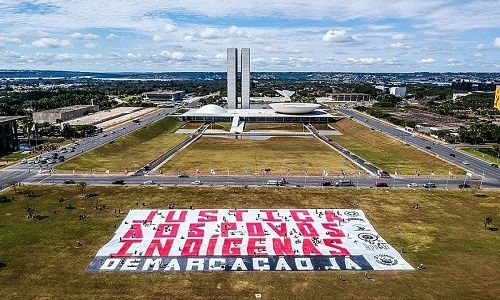
Photo: Scarlett Rocha
We could cite the freezing of fines charged by the Brazilian Environment Institute (Ibama), legislative proposals that threaten protected areas, technical advice to release illegal wood.
Or the harassment of environmental agents and exoneration of the guilty, not executing the inspection and fire extinguishing budget.
Perhaps failed military operations to combat deforestation or reductions in illegal deforestation actions and embargoes. Until the defamation of the scientific knowledge of the National Institute for Space Research.
The indigenous areas most affected by the joint action of illegal mining, the agricultural front, burning and illegal invasions were the Xingu basin, TI Munduruku, TI Urubu Branco, TI Manoki, TI Karipuna; Conservation Units: Southwest of Pará, Triunfo do Xingu Environmental Preservation Area (APA).
Mobu Odo, indigenous macaw and head of the Cachoeira Seca village, sentences: "We are threatened, deforestation will end our territory."
So war has been declared. That is why the indigenous people were the first to confront the policies of the current president. The choice is to fight or be exterminated.
War of attrition
Violence against indigenous peoples is experienced day by day. Institutional racism, media disqualification, assassinations of leaders, attacks in villages, threats, lack of opportunities, access to basic needs, health and public services.
Denigrating statements are constantly posted on social media and media. For example, Generals Hamilton Mourão (Vice President) and Augusto Heleno (Minister of the Institutional Security Cabinet).
The offensive expressions of the ministers Nahban Garcia, a ruralista, founder of the Unión Democrática Ruralista, described as instigators of the murder of the trade unionist Chico Mendes are known. The Brazilian trade unionist and environmental activist, a peaceful fighter against the extraction of timber and the expansion of pastures over the Amazon, was killed by ranchers.
Likewise, from the landowner Tereza Cristina da Costa, Minister of Agriculture, Livestock and Supply, as well as from parliamentarians who support the Governments in states and municipalities.
A whole fascist discourse that encourages the annihilation of the indigenous people. Aimed at forcing indigenous reserves to capitalist exploitation and withdrawing legal guarantees of land demarcation.
But the indigenous response is largely silenced. Who defends the native peoples who were before the European invaders?
Some 13 percent of Brazil is demarcated as indigenous lands. Some 800 lots are pending pending the completion of the demarcation process, and in many indigenous communities, the process did not even begin.
President Jair Bolsonaro signed an amnesty decree, in late December 2019, for irregular land acquisitions.
Regulation 910 allows the privatization of public lands illegally invaded until the end of 2018, especially unused areas. Also in nature reserves that can be canceled. Raised the race pennant for the mob and international finance capital.
In Brazil there are 114 isolated indigenous peoples, according to the Indigenous Missionary Council (CIMI) and 104, according to the registry of the National Indian Foundation (Funai).
They are peoples in resistance against the colonizer. Self-employed. Many of their lands must be demarcated. Meanwhile, more than twenty isolated indigenous peoples were invaded by loggers, illegal miners, gold prospectors, hunters, grileiros, fishermen and extractivists, denounces the CIMI.
Amazon
Isolated peoples must be preserved. Many of the villages are headed by indigenous women. They lead with the influence of educational and health measures. Such is the case of the indigenous councilors in Atalaia do Norte.
This is how stories of the Spanish invaders tell it, such as those of Francisco de Orellana and the missionary Gaspar de Carvajal, about warrior women, the Amazons.
Five villages of the Kayapó people are led by women in the Amazon. Also in the Xavante people, Carolina Rewaptu, leads the Marãiwatsédé indigenous land.
To the south, Eunice Kerexu of the Guaraní Mbya people stands out, who heads the Morro dos Cavalos village. In the upper Xingu, the Yamarikumã movement of warrior women emerged. Watatakalu and Ana Terra emphasize. Both daughters of a great - deceased - chief of the Yawalapiti people, Pirakuma.
For the first time in Parliament, an indigenous woman represents indigenous rights. This is Joenia Wapichana, a Brazilian lawyer. The first indigenous woman to practice such a profession in Brazil.
In the 2018 elections, she became the first indigenous woman to be elected to the Chamber of Deputies of Brazil, representing the state of Roraima and as an affiliate of the Sustainability Network (REDE)
Sonia Guajajara, executive coordinator of the great institutional movement, the Articulation of Indigenous Peoples of Brazil (APIB), stands out, aspiring to the Vice Presidency of the Republic in the 2018 elections.
In August 2019, the first indigenous women's march took place in Brasilia, with more than 2,000 women from 113 villages.
According to the indigenous leader Joziléia Kaigang, one of our victories was the approval, by the Supreme Court, of the demand for breach of constitutional precepts (DPF 709).
The Union was forced to draw up a plan to fight Covid-19 for indigenous peoples. Sanitary barriers were established on 33 lands, with the confirmed presence of uncontacted Indians, and it also made it possible to contain potential invaders or spreaders of the disease.
According to this action, "the death rate of Covid-19 among indigenous peoples is 9.6 percent, while among the Brazilian population in general it is 5.6 percent."
This forced the Government to carry out within 30 days, a plan to deal with Covid-19, with a guarantee of sanitary barriers and the isolation of indigenous lands. "This was a great victory."
Cobra
In the midst of the aggravated pandemic in Brazil, a historic decision is looming, transcendent for indigenous peoples.
If the time frame is regularized, it opens -by decree- the possibility of making numerous demarcations of indigenous lands unviable, which have not yet completed their procedures.
According to data from the Conselho Indigenista Missionário (CIMI), 63 percent of indigenous lands are not legalized.
In other words, of the 1,290 indigenous lands, 821 have no demarcated limits and most of these, without legalization procedures. Those who sharpen their teeth know that well, with the capitalization of those lands.
With this, the rights of indigenous peoples to their self-determination are exposed, as has been observed in the report of the UN Special Mission on the rights of indigenous peoples, in August 2016.
The saga of the indigenous people can be synthesized by the myth of the big cobra, of the Katxuyana people, in the face of the abuses practiced by the public power, in favor of the invaders.
In the context of the struggle for possession of ancestral land, perhaps the true snake is the current Brazilian state prepared to swallow up the original peoples.
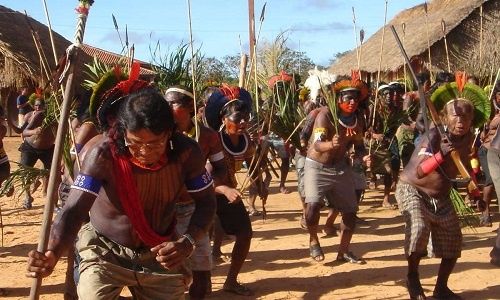
Photo: T. Turner.
The use of the structure of state institutions - by the dominant political group - to achieve their private purposes is part of the Brazilian heritage history.
Undoubtedly, a great threat to the indigenous peoples who fight against the Brazilian states and municipalities, administered by the interests of the invaders of public lands.
This recalls the plot of a great literary work, about the exploitation of cocoa in the Ilheus region in southern Bahia.
The most diverse human types, attracted by fertile lands and abundant money, as the famous Brazilian writer Jorge Amado describes it well in his book “Tierras del sin fin”.
But this story, which also carries memory, is too current.
https://www.telesurtv.net/telesuragenda ... -0034.html
Google Translator

